The Passage of Time in the Warp and Weft of the Wire production Industry: A Look at the Growth and Historical Transformations at the Heart of Metal Industries – Part 2
Welcome to the second part of our amazing journey into the depths of the wire production industry.
Special thanks for your continued support – our next steps are towards new frontiers of knowledge and innovation. We remind you that this article is still waiting for another chapter that you should not neglect. So please don’t miss the upcoming section for more and deeper information. We look forward to seeing you in the next section, where our explorations will continue.
Raw Materials Used in Wire Production
The raw materials utilized in wire production are primarily metals and metal alloys, selected and combined based on the desired physical and chemical properties in the manufacturing process. These materials are detailed as follows:
Steel:
- The primary base for producing wires with a variety of applications. Steels are divided into low carbon, medium carbon, and high carbon based on their carbon content. Low carbon steel (like AISI 1010) is typically used for wires that require good flexibility and bending properties, while higher carbon steels (like AISI 1080) are needed for wires that demand greater strength.
Stainless Steel:
- Contains chromium, nickel, and sometimes molybdenum, providing the wire with resistance to corrosion and high temperatures. Different alloys are used based on the wire’s application to provide desirable mechanical properties.
Aluminum:
- Aluminum and its alloys are used due to their lightweight, good conductivity, and corrosion resistance, primarily in the electrical transmission and construction industries.
Copper and Copper Alloys:
- Known for excellent electrical and thermal conductivity, copper is appropriate for manufacturing wires used as electrical conductors. Copper alloys like brass and bronze offer diverse mechanical and chemical properties.
Nickel and Nickel Alloys:
- Nickel and its alloys, such as Monel, Inconel, and Hastelloy, are used in corrosive environments and extremely high temperatures, commonly in the chemical, aerospace, and oil and gas industries.
Titanium:
- A light, yet incredibly strong metal with good corrosion resistance, commonly used in the medical industry, aerospace, and chemical environments.
Coated Materials:
- Wires are sometimes coated with other materials such as zinc for galvanization, or plastic or rubber for electrical insulation, enhancing properties like corrosion resistance and conductivity.
Additionally, for the production of wires with specific properties and applications, other elements and compounds such as titanium, vanadium, molybdenum, and hundreds of other elements and mixtures may be added to steel. These are carefully selected and combined in precise ratios to achieve the desired engineering properties, such as wear resistance, flexibility, high strength, and other important characteristics.
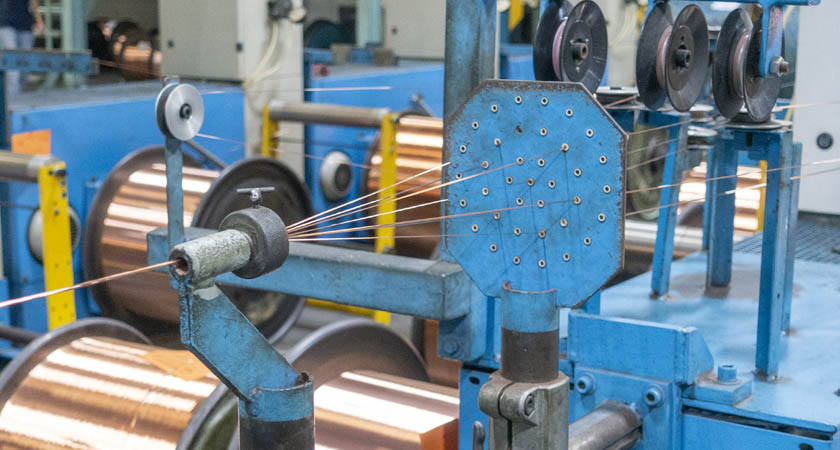
The raw materials used in wire production must be chosen with intended properties in mind, such as hardness, flexibility, resistance to mechanical or chemical stress, and electrical or thermal conductivity. These materials are often transformed into the final wire product using processes like cold drawing, rolling, heat treatment, and surface treatments.
History of the Wire Industry Globally
The wire industry, a crucial manufacturing sector in metal materials and products, has deep historical roots. For thousands of years, humans have extracted metals and produced wires and metal ropes. With technological advances, wire manufacturing methods have evolved as well.
Bronze Age: During this period, the first wire samples were made from copper and bronze, used for their malleability in creating jewelry and decorative objects.
Roman Era: The Romans utilized bronze and copper wires for a variety of purposes, including coin production, jewelry making, and other daily uses.
Middle Ages: The wire industry saw advancements during this era, where, for example, in Europe, wire gained importance largely due to its widespread use in chainmail armors.
Industrial Revolution: This historical period, occurring in the 18th and 19th centuries, was a turning point in wire industry development. The evolution of machinery and rolling and drawing capabilities allowed for the production of thinner wires in longer lengths, significantly increasing industrial wire use.
20th Century to Today: The intense growth in technology and metallurgy has led to the production of wires with advanced engineering properties. The wire industry has experienced a significant transformation with advancements such as sophisticated cold drawing processes, precise rolling techniques, and digital control systems, enabling wire production in a wide range of sizes with varying mechanical and chemical properties.
Nowadays, metal wires are used in nearly every industrial sector, from construction and machinery to electronics and communications. Wire planning and design utilize advanced software and computer simulations to produce products with exceptionally high precision.
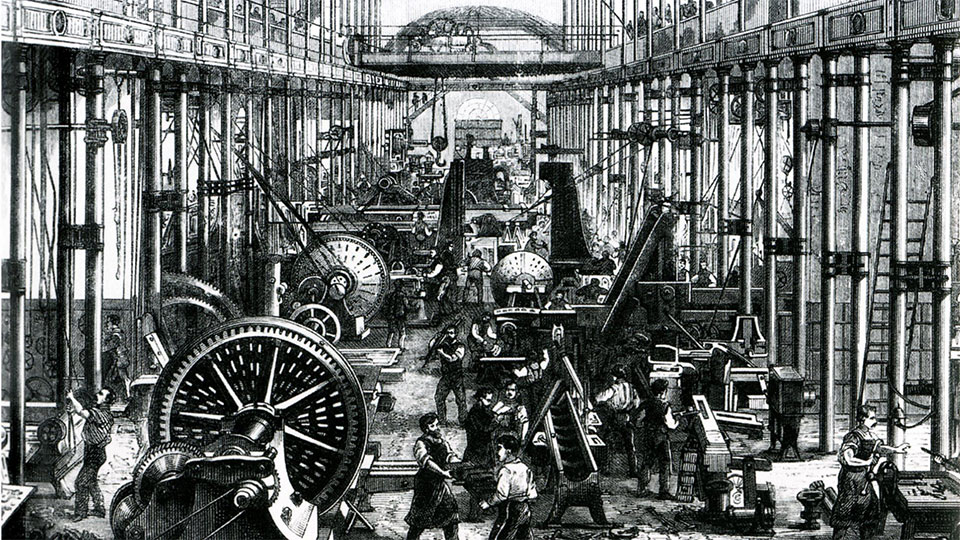
Exploring the Earliest Methods of Wire Production
The earliest methods of wire production date back to ancient times, involving very basic and manual processes. Metals obtained from mining or the recycling of old metal objects were initially heated to render them pliable.
- Manual Drawing: After heating, the metal was shaped through hammering into basic and semi finished forms, and then manually pulled through die plates with holes—progressively reducing the metal’s diameter to the desired wire size and increasing its length.
- Hand Rolling: Softer metals, such as gold and silver, might also undergo hand rolling, where the metal was passed between two manually turned rollers to achieve the desired shape and thickness.
- Hammering: With this method, the heated metal was gradually hammered down to the desired thickness, thus forming it into wire.
These primitive techniques were also often carried out under challenging conditions in small workshops without precise controls and required substantial manpower. With the advent of the Industrial Revolution, new technologies like automated rolling and continuous drawing machines emerged, increasing efficiency and improving the quality of produced wire.
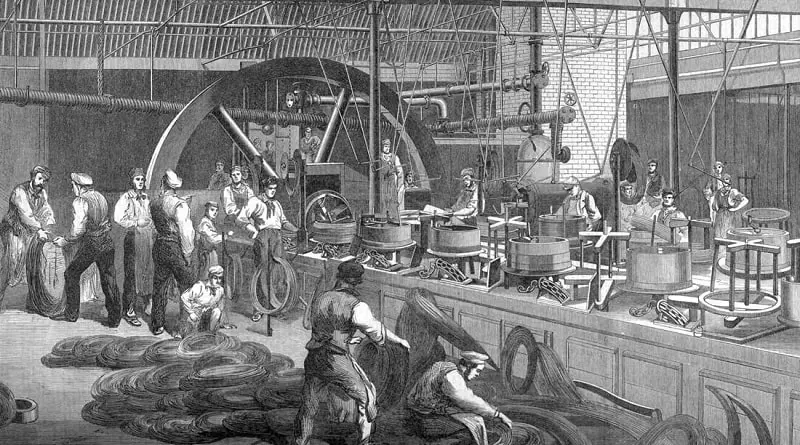
Evolution of Wire Production Technologies and Methods Over Different Eras
The evolution of production technologies and methods from ancient times to the present has been significant. Simple manual production methods, such as pulling metal through perforated matrices, have given way to mechanized processes that enable mass production with high precision.
Industrial Revolution: The most critical changes in production technology occurred with the start of the Industrial Revolution, introducing mechanized rolling mills and automatic drawing machines. These devices allowed for the production of wires with uniform diameters and extensive lengths using mechanical energy.
20th Century: In the 20th century, developments in metallurgy and materials engineering, alongside ceaseless innovations in production machinery, aided in improving wire production capabilities and the engineering properties of metals. The production methods for various metal wires became more sophisticated, leading to greater flexibility in design and the creation of diverse products.
Modern Techniques: The digital age and industrial automation have provided a platform where highly precise machines and computer controls play a crucial role in production. Continuous manufacturing methods, hot and cold rolling, drawing, and more complex processes like advanced heat treatments and finishing operations such as coating and surface finishing have resulted in wires specifically tailored to unique applications.
Sustainable Practices: Recently, sustainable and environmentally responsible production approaches have made their way into this industry. By utilizing metal recycling methods and less polluting processes, the wire industry has not only achieved greater efficiency but also endeavors to protect the environment through reduced greenhouse gas emissions and optimal resource consumption.
Thus, from traditional manual drawing to utilizing today’s advanced technologies, wire production methods are an example of the tremendous progress in technology and continuous improvement in manufacturing processes.
Key Innovations and Advances in the Wire Industry
The wire industry has taken significant strides towards development and increased efficiency by embracing continuous innovations and technological advancements. Several key points of this progress include:
- Automation and Precise Process Control: Mechanization and computer precision controls have enabled the production of wires with extremely high accuracy and repeatability. This has also led to significant increases in productivity and reductions in production costs.
- Advanced Rolling Technologies: Multi-stage rolling, continuous finish rolling, and cold rolling are technologies that have assisted in producing higher quality products with precise diameters.
- Modern Heat Treatment Operations: Advances in heat treatments like annealing have helped control the mechanical properties of wires better, increasing their flexibility.
- New Coatings and Surface Treatments: The application of protective coatings such as galvanizing, plastic, or rubber coatings have definitive advantages, such as increased lifespan and improved antibacterial properties and corrosion resistance.
- Recycling Technologies and Repurposing: Advances in wire recycling and the use of scrap materials have contributed to cost reductions and lessened environmental impacts of the industry.
- Materials Engineering: The development of new alloys and improved material properties, such as high strength, corrosion resistance, and lightweight, not only have elevated the overall quality of wires but also enabled their use in novel applications like aerospace and automotive industries.
Ongoing innovations and future advancements continuously expand applications and enhance the quality of products in the wire industry. It remains one of the most dynamic and influential sectors in manufacturing.

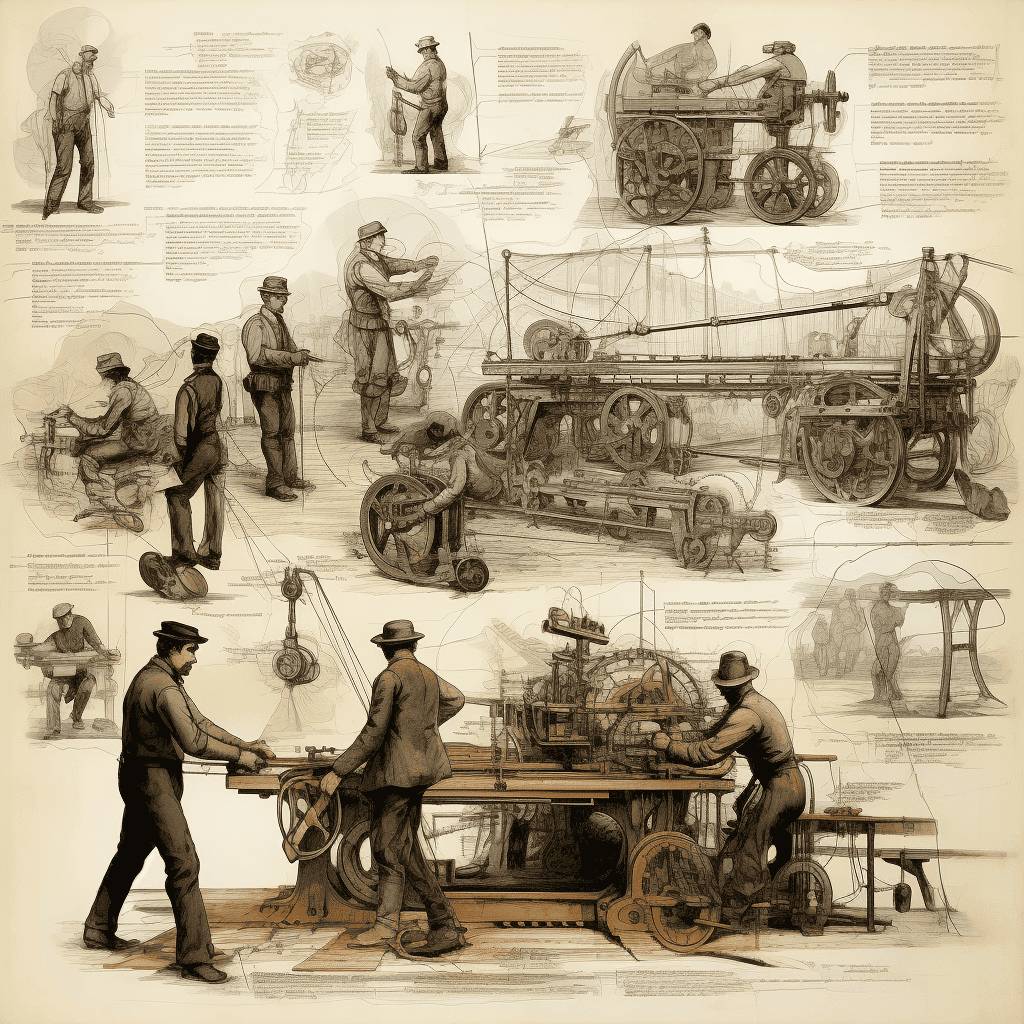
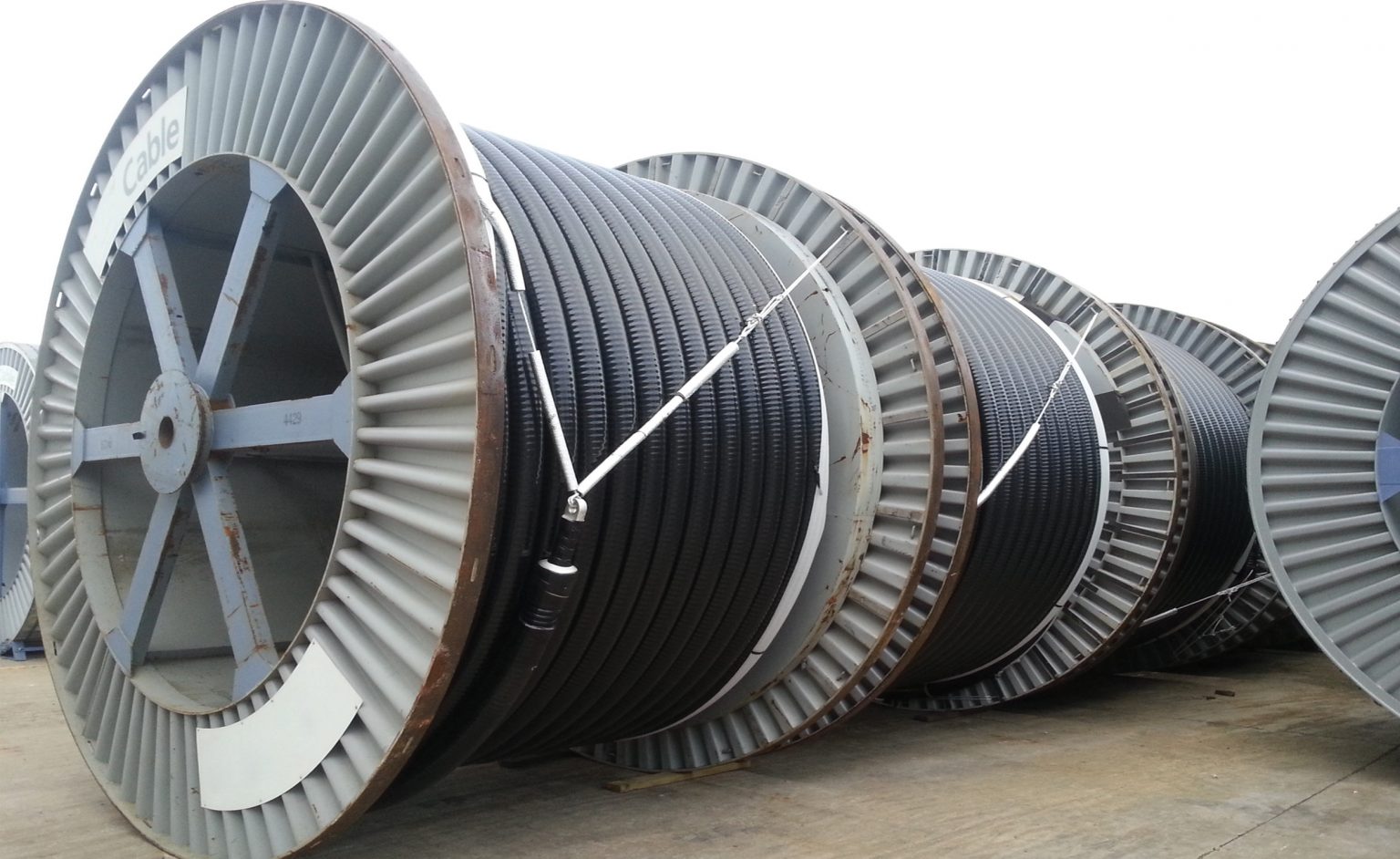




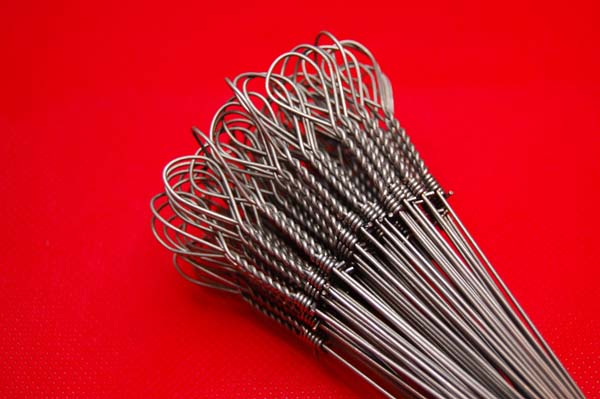
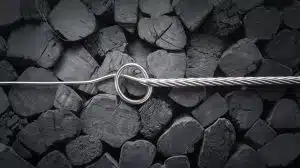
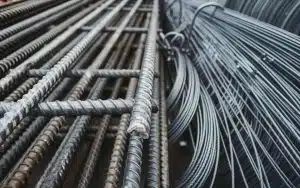

Comments (3)
chelsey.mendez
24 January , 2024This is really interesting, You’re a very skilled blogger.
I’ve joined your rss feed and look forward to seeking more of your
fantastic post. Also, I’ve shared your web site in my social networks!
bina
8 March , 2024Can you be more specific about the content of your enticle? After reading it, I still have some doubts. Hope you can help me.
sami
11 March , 2024Can you be more specific about the content of your article? After reading it, I still have some doubts. Hope you can help me.